We always go on some fungi walks in the fall. My daughter loves it—it’s like a treasure hunt. I do too. Tuning into mushrooms is a good way to appreciate the diversity, complexity, and interconnectedness of life in the forest.
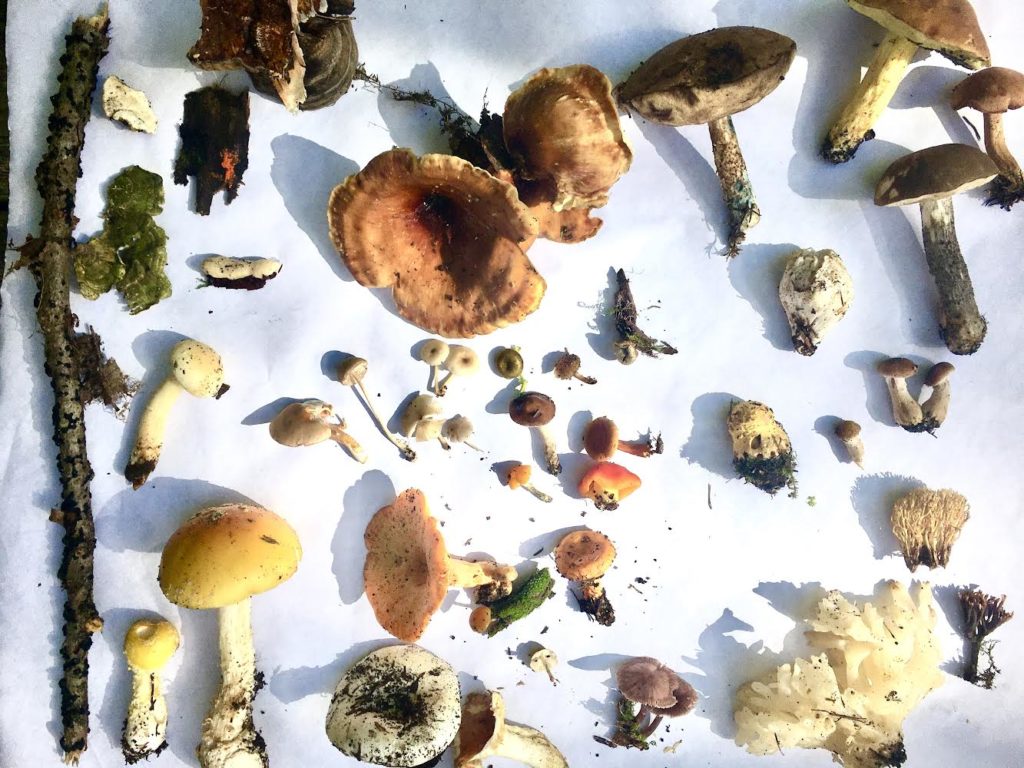
We talk about how the fungi (along with bacteria and invertebrates) are the decomposers of the forest. Without them the soil would be depleted and we’d be in over our heads in dead stuff. That would be gross. Furthermore, the plants need them. Many species of fungi and plants have coevolved together and live in close symbiotic relationships. The mycorrhiza (a fungus which grows in association with the roots of a plant in a symbiotic relationship) help the plant absorb water and nutrients, and in return the plant gives the mycorrhiza some sugar. Beyond this, the fungal network also connects the whole forest. Nutrients can be moved and shared through this network between trees. And trees that are under insect attack can send a warning to other connected trees, which are then prompted to produced volatile organic compounds themselves (that may attract the insect’s predators). This and more is all going on under our feet. Fungi and their ecology are just wow, and are a scientific frontier!
This year we did a little accidental experiment. After having a good look at the mushrooms we left them outside on the deck (we usually clean up and put them in the forest). The next day we saw one of our resident red squirrels make off with one of them in its mouth. We decided to leave them for a couple days and see which ones the squirrels would take. They choose the poisonous amanita ones (and just took the caps)! Don’t worry—they aren’t poisonous to the squirrels. We read that their gut lining has an adaptation that doesn’t allow the toxin to enter the blood stream.
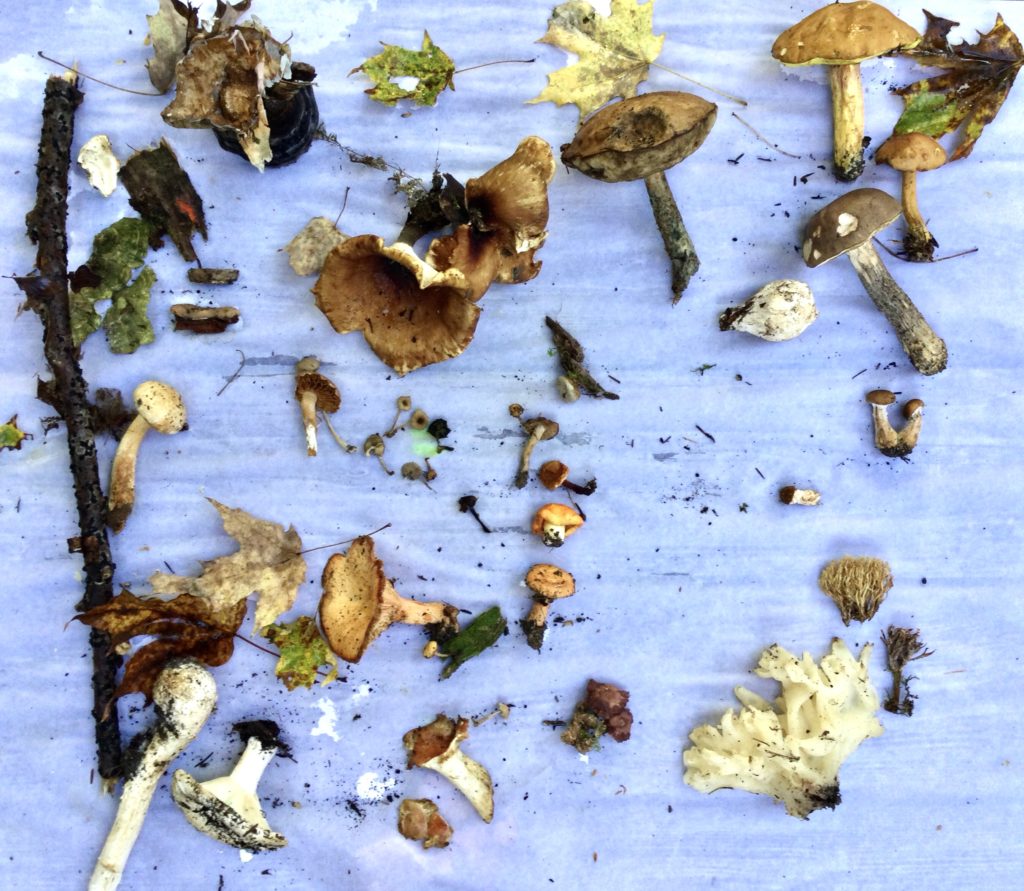
Before with the ones taken circled:
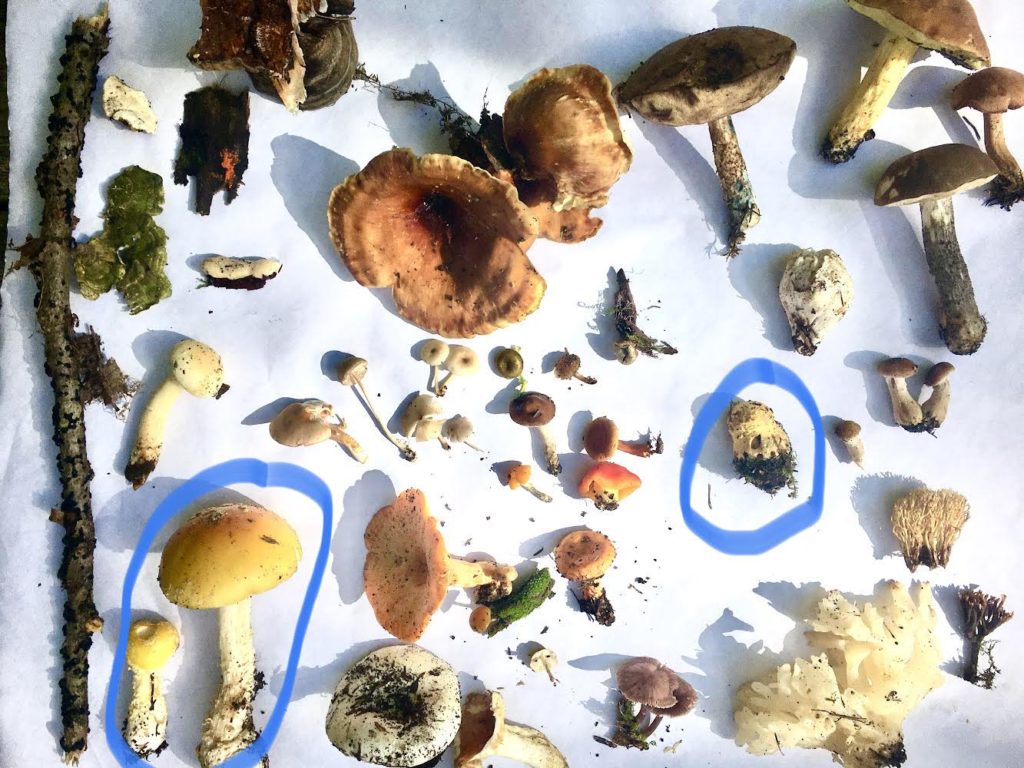
After:
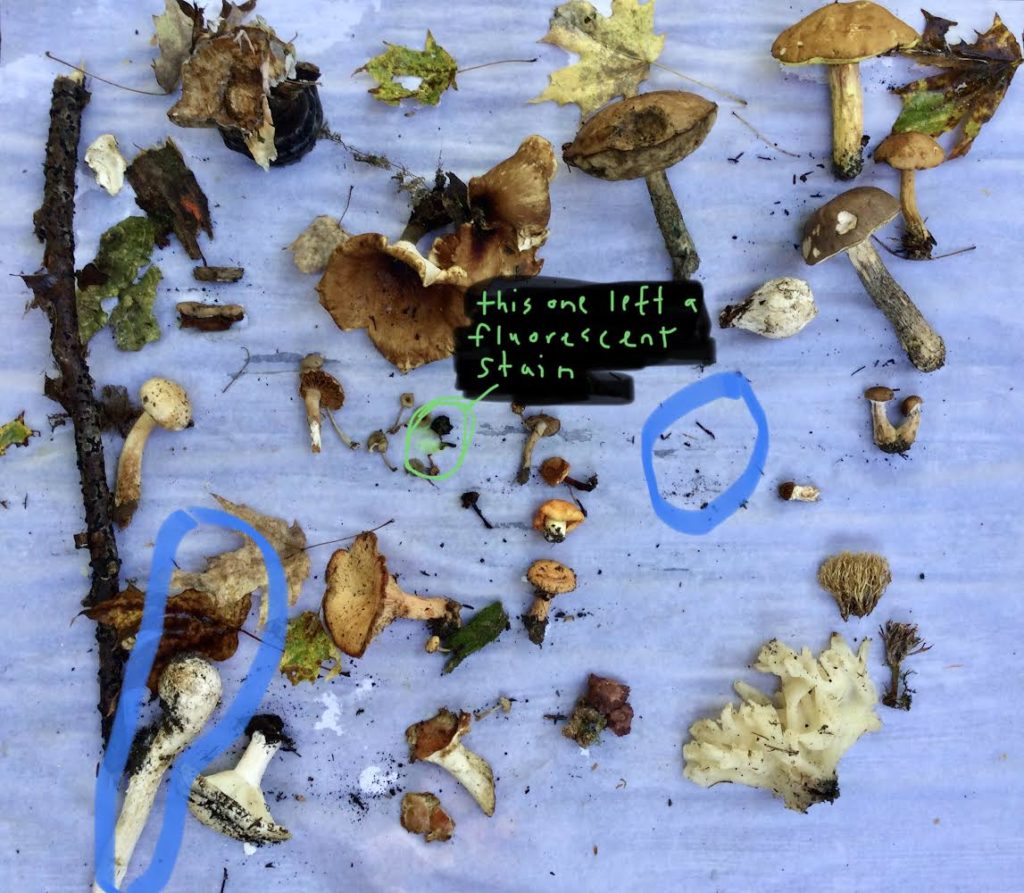
**WARNING**: Many mushrooms are poisonous and some are deadly. Never eat a mushroom that you aren’t sure about. Children must be of an age and have a responsibility level to understand this and act accordingly.
The perfect children’s book pairing for a fall forest fungi explore is “The Mushroom Fan Club” by Elise Gravel. It’s also available in French “Le Fan Club des Champignons“. You can click on the images below to go to the respective book database pages.
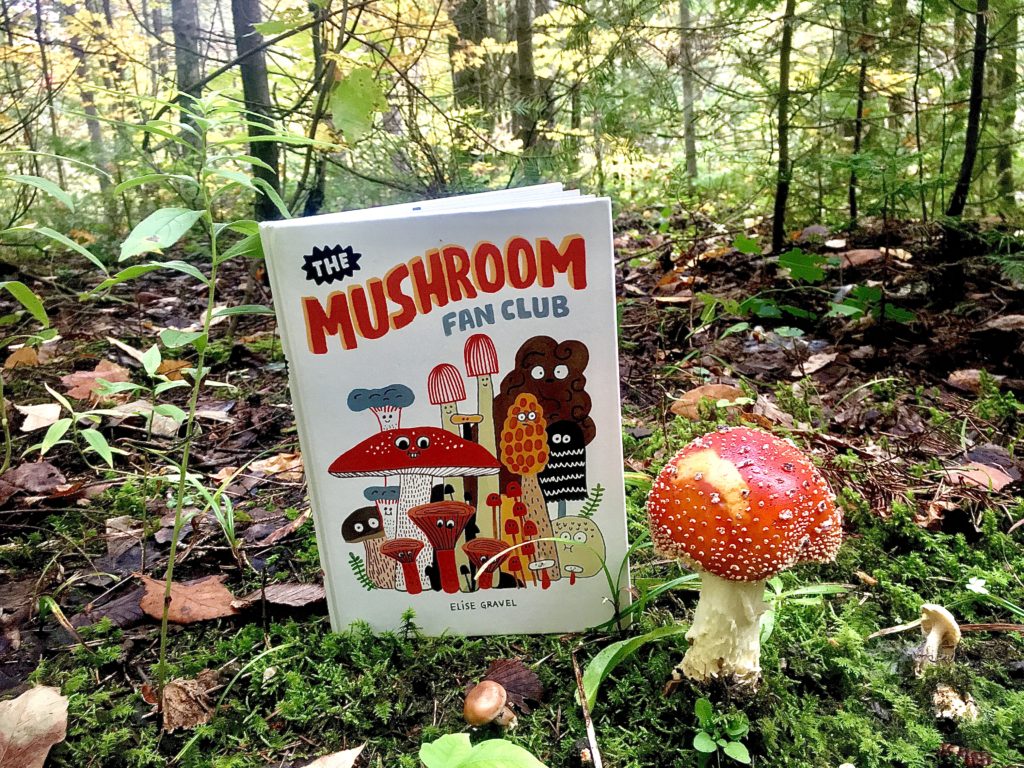
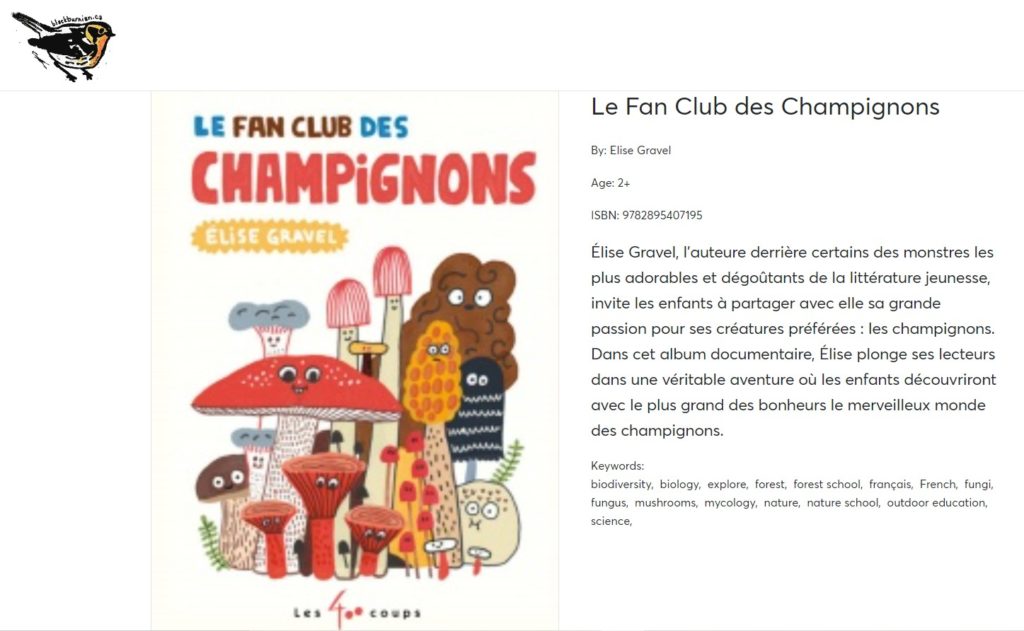
Step outside and have a look, Kate
